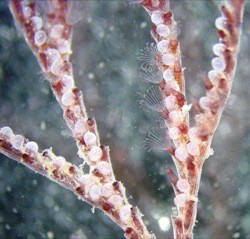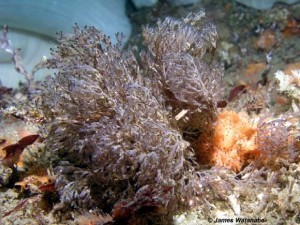Just as the Amazon rainforest may hold a cure for cancer if only scientists can find it, a bizarre marine critter found off the California coast — Bugula neritina— is the only known source of a potential new Fragile X treatment, Bryostatin.
Last month, FRAXA sat down with scientists from Neurotrope BioScience, a specialty biopharmaceutical company developing medicines for rare diseases and Alzheimer’s based on Bryostatin. Their Fragile X program is based on research by a West Virginia team led by Daniel Alkon, MD, which showed that Bryostatin-1 restores hippocampal synapses and spatial learning and memory in adult Fragile X mice. “Our results show that synaptic and cognitive function of adult FXS mice can be normalized through pharmacologic treatment and that bryostatin-1-like agents may represent a novel class of drugs to treat Fragile X mental retardation even after postpartum brain development has largely completed,” remarked Dr. Alkon.
Bugula and Bryostatins
Often mistaken for seaweed, bugula is actually colonies of small animals, like coral. It has been found in Algeciras Bay, Spain, and off North Carolina’s outer banks and the California coast.
Bryostatins were first isolated in the 1960s from bugula. To date, 20 different bryostatins have been identified. They are potent modulators of protein kinase C and are currently under investigation as anti-cancer agents and as a memory-enhancing agent.
In Fragile X mice, bryostatin normalized BDNF, PSD-95, GSK3, and other cellular markers of Fragile X syndrome. Also, learning and memory improved in the Morris Water Maze test, demonstrating that live adult mice benefited from the drug.
Next Steps
One challenge is that the world supply of bryostatin-1 is very limited, and so it might be necessary for Neurotrope to organize scuba divers to scour off-shore rocks for more bugula!
In the meantime, bryostatin-1 is being run through a battery of tests at the Fragile X Validation Initiative in Chile (FRAXA-DVI), headed by Dr. Patricia Cogram, to confirm and extend the previous findings.



